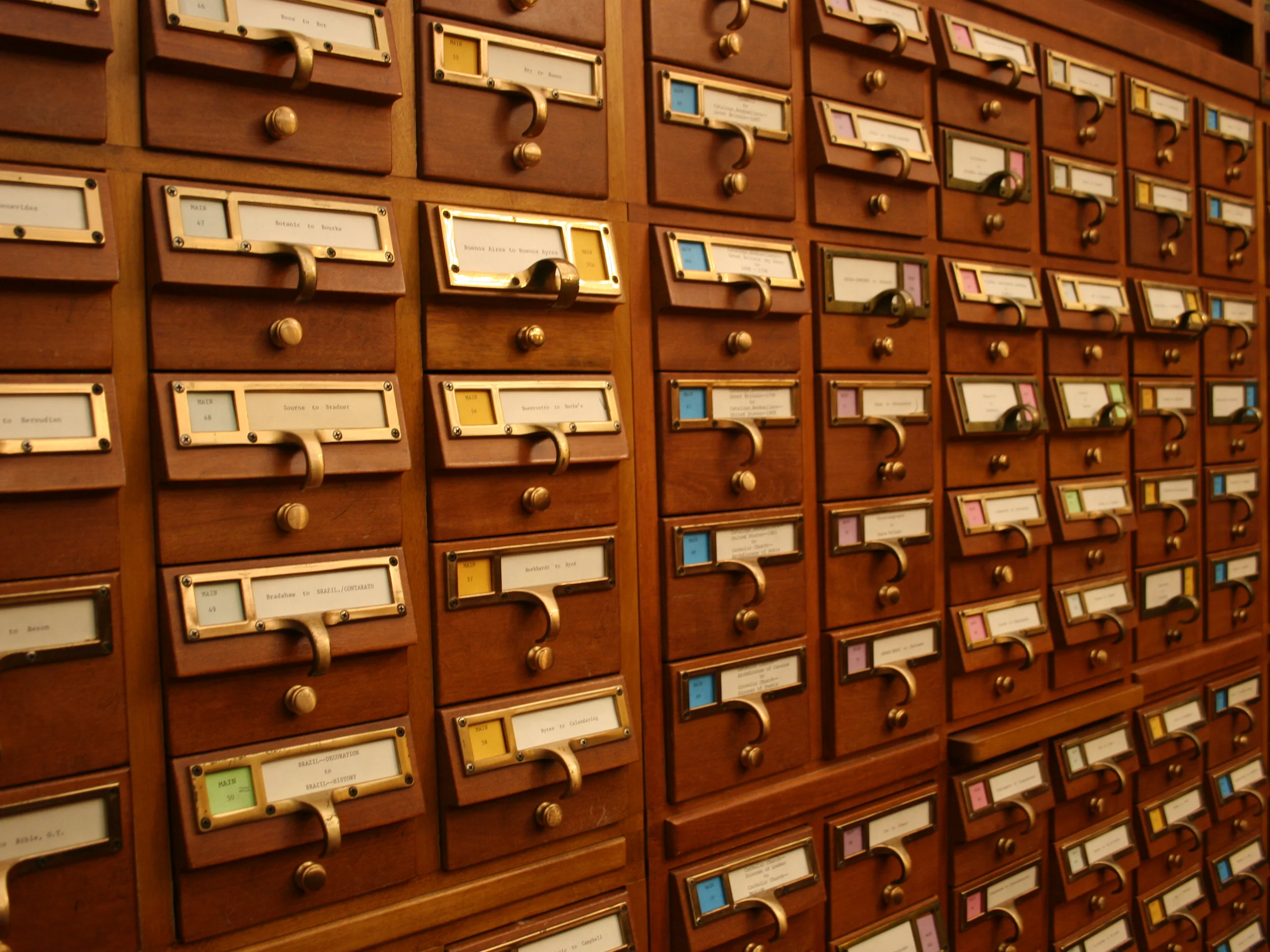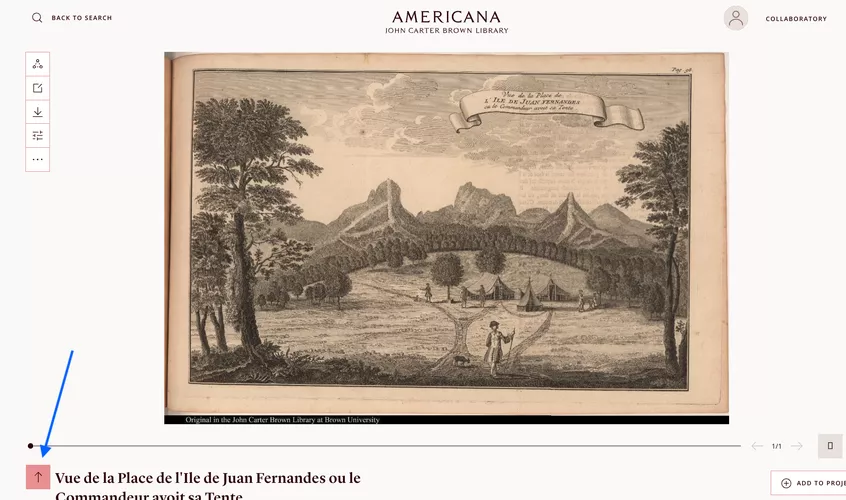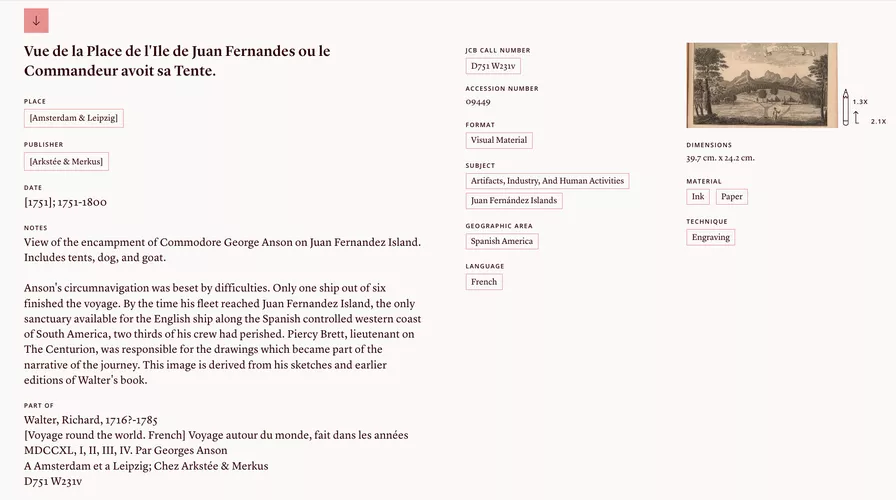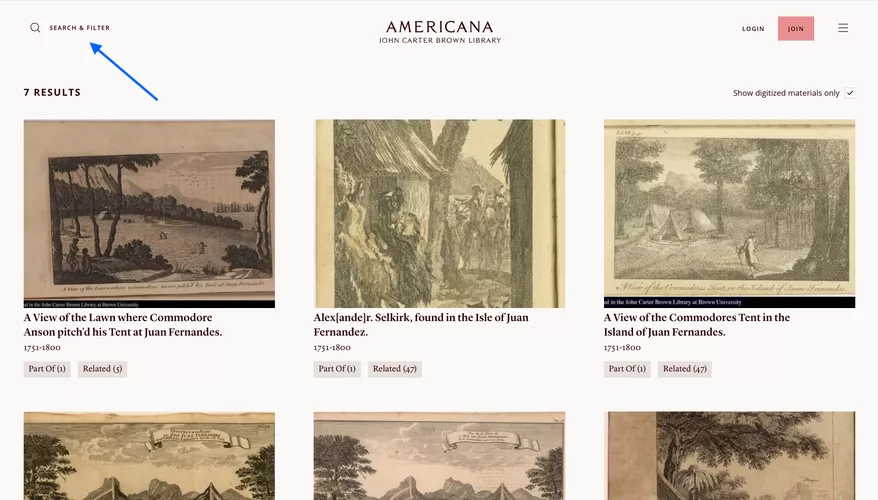
Reading Bibliographic Information
Bibliographic Information
In the lower left corner of your window, you can find the title of the item that you have accessed. If you click on it or the pink arrow next to it, the "Bibliographic Card" will come up, and show all the bibliographic information that we have available for this item. Bibliographic information is information about the book itself — the book's biography.
< 1 of 7 >
Bibliographic Card
The Bibliographic Card contains three columns:
The first column contains a bibliographic description of the item, with fields such as creator, title, published, place (of publication), publisher, date, notes (a short description of the work), local notes (a description of our copies of the work), part of (which indicates if this item is part of a larger item, such as a book, collection, or atlas), and more. The entries vary depending on what is being described.
< 2 of 7 >
An Open Door to New Findings
The second column contains the call number (the library code that shows the location of the item in the library), the accession number (the unique identifier that an item receives when it is acquired), and many other fields that are transformed in tags, such as format, subject, language, geographic area (the subject of the item, not where it was published).
This column open doors for you to find new items, by clicking on the tags.
< 3 of 7 >
Tags and Related Searches
For example, if you click on "Artifacts, Industry, and Human Activities" you can browse the thousands of items we have depicting human actions; or by selecting "Juan Fernández Islands" you can see the much smaller set of items about this remote archipelago off the coast of Chile that were indexed with this term. The results can then be filtered with the use of keywords or additional tags by opening the "Search and Filter" pane to the left.
< 4 of 7 >
In Depth: Metadata Granularity
The bibliographic information that you find in the Bibliographic Card was produced by specialized catalogers through decades of work. Different bibliographic records can have different levels of detail, something that we refer to as "metadata granularity".
Because of the way in which items were historically cataloged, some records may only contain basic information such as the title and author, while others may contain additional information such as the summary, subject headings, and physical description. The amount of information included in a bibliographic record can vary depending on the library's cataloging standards at the time that the record was produced. And on the information available on that item!
< 5 of 7 >
Materiality
The third column is dedicated to the materiality of the item. On the top, there is a thumbnail of the item, with a representative pencil indicating its relative dimensions.
Below the thumbnail, you will find information about its dimensions, material, and technique.
< 6 of 7>
Metadata and Language
Our catalog is the work of many cataloguers over decades and the language they use to write can vary. While catalogers use controlled vocabularies, including subject headings and classification systems, to try to control differences person-to-person, these systems themselves can — and should! — change over time. So while controlled vocabularies help to ensure consistency and accuracy in cataloging, older language used in bibliographic records can be sometimes outdated and harmful, despite of our best efforts. Our catalogers continue to update records to modern cataloging standards as instances of outdated information are discovered.
It is also important to know that our search function also searches some parts of the record that are not controlled by controlled vocabularies and classification systems, like notes fields. Catalogers, curators, and early volunteers may also have used different terms or phrases to describe the same item, which can affect how search results are displayed and make it more difficult to find specific items in the catalog. It is worth trying synonyms, plurals, and variant spellings if you're having difficulty finding something — or ask for help. Our librarians are always happy to pick at a puzzle!
< 7 of 7 >




